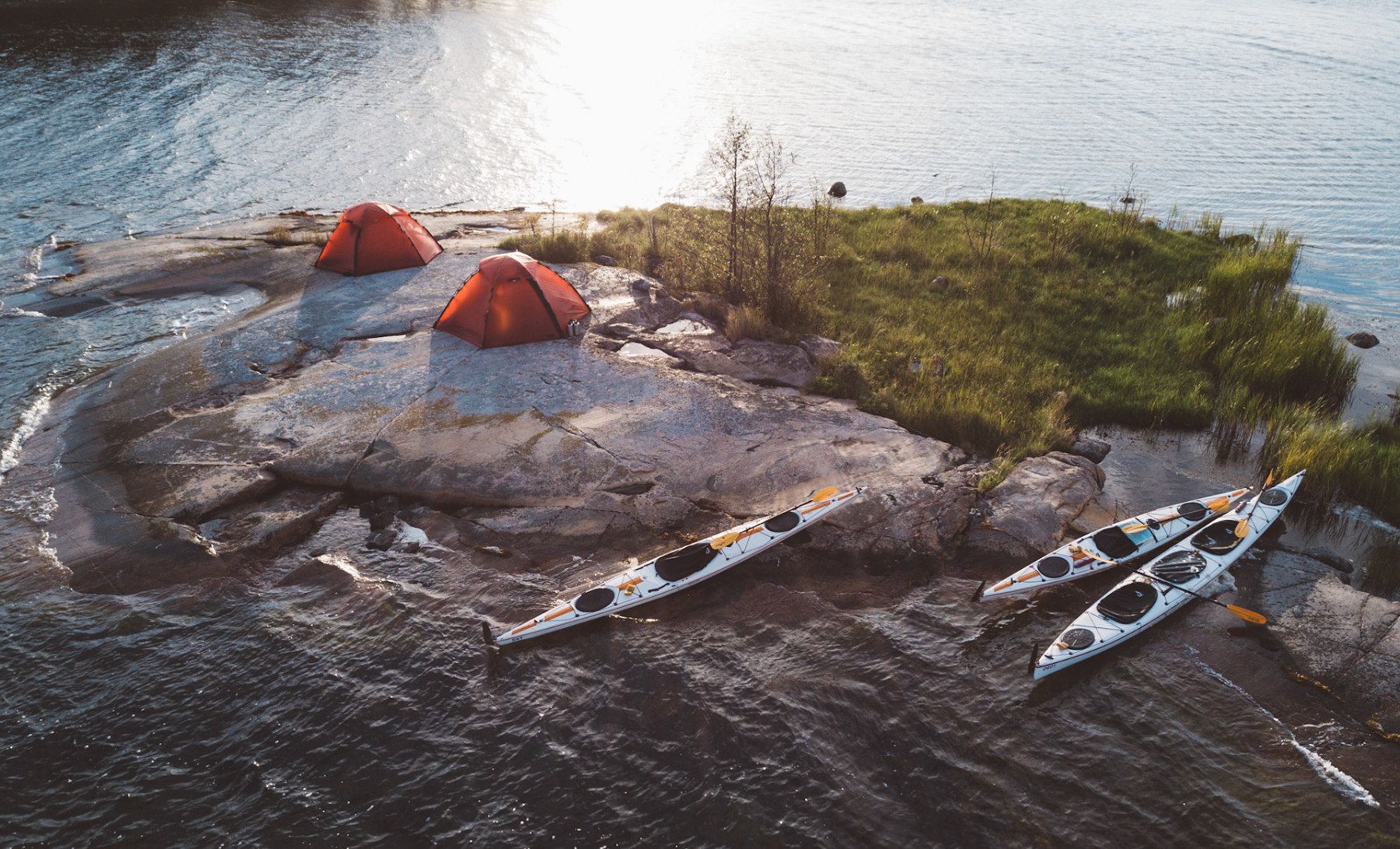For us, the best thing about wild camping is getting back to basics and being fully immersed in nature. You might be far away from creature comforts but you’ll gain a lot in exchange - a sunset dip on a deserted beach, the joys of a simple meal outside, stargazing from your bivvy bag. You might fall asleep to the sound of the waves, or the wind rustling through the grasses.
Below, we’ve selected 10 wild camping adventures which reflect the diversity of the landscapes you’ll find in Europe. From the highlands of Scotland to the Arctic wilderness of Norway and uninhabited Greek islands, you’re sure to find something on the list which will appeal to your sense of adventure.
Wild camping vs. camping: what's the difference?
Before moving on, we should make a quick distinction between these two terms.
Put simply, wild camping is a term used to describe the act of camping anywhere other than a campsite, park or garden. This could be anywhere - a forest, a hilltop, a beach etc. but the crucial distinction is that you won't have immediate support next to you, such as a shop or a shower, and you won't have paid for the pleasure.
If you're nervous about going wild camping for the first time, it can be a good idea to first go camping in a paid campsite. This will give you an idea of what to bring, what not to bring and give you a bit of experience cooking meals and setting up your tent. When you inevitably use the campsite shop, think about what you've bought yourself - and maybe pack something similar when you go wild camping.
There are several reasons why wild camping might be out of your comfort zone, of course, from worries about regulations to taking your first poo outdoors. Another option is to try wild camping out on a guided trip; it’ll help you feel more comfortable in a wilderness environment, and you'll learn the basics of wild camping responsibly out in the field (often literally). Wild camping is typically unsupported, but guided trips give you the chance to experience wild camping in a supported environment - with professionals who know their stuff.
Where in Europe is Wild Camping Allowed?
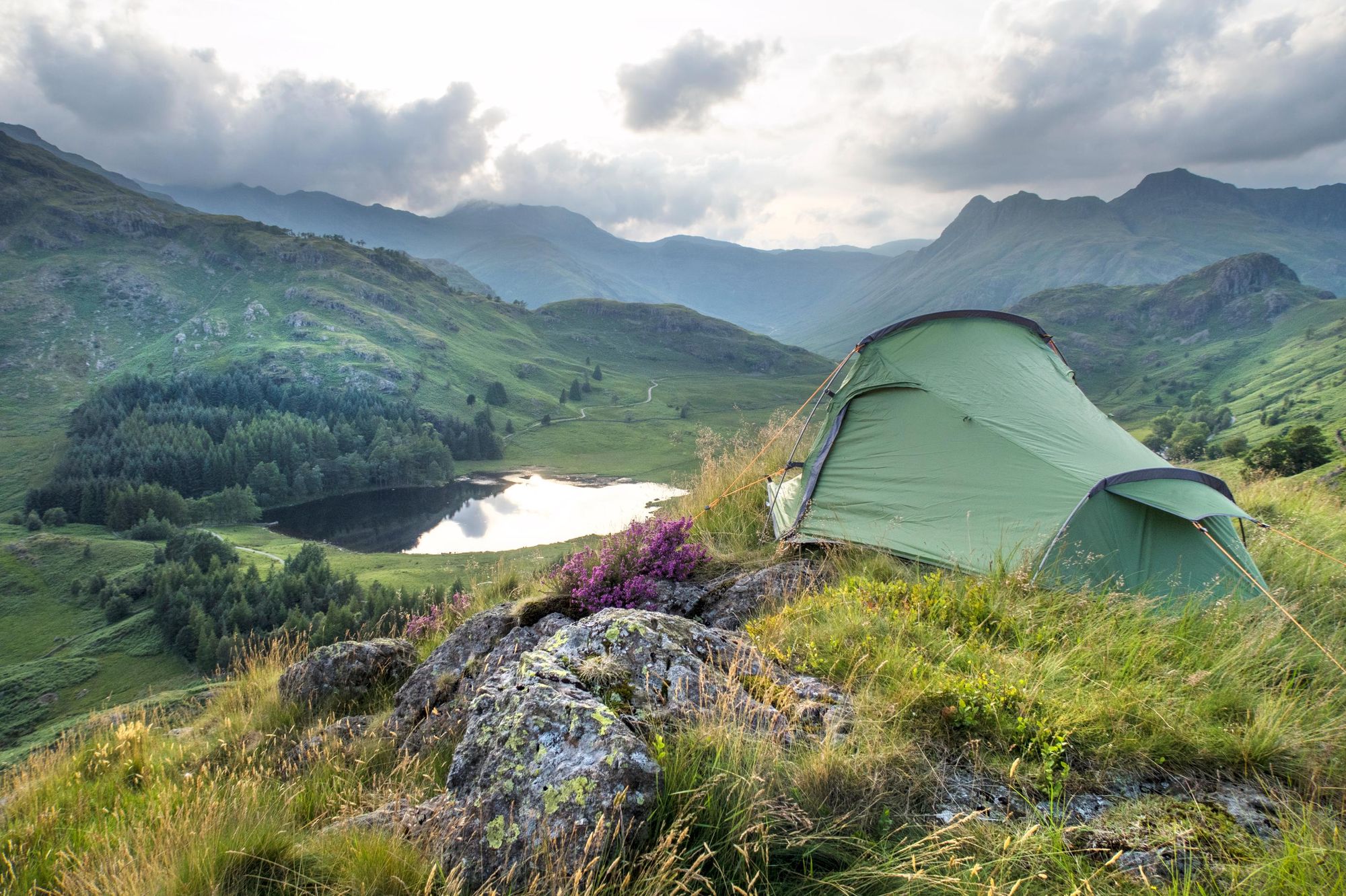
Each country has its own rules concerning wild camping, and legislation can be complex. In countries such as Germany, Italy, England and Wales, wild camping is considered illegal, and this rule is often enforced. Some countries (such as France) have loopholes where, although you aren't allowed to set up a tent, you are allowed to spend a night under a tarp or in a bivvy bag. You'll need to do your research for each individual location.
There are a few European countries with more permissive attitudes to wild camping. Norway positively encourages wild camping under allemannsretten, a long-standing right to roam. You’re allowed to camp for two nights on uncultivated land, as long as you are at least 150 metres from the nearest habitation. Sweden and Finland have similarly welcoming attitudes. Scotland, too, allows wild camping under its right to roam, but it’s important to follow the Scottish Outdoor Access Code.
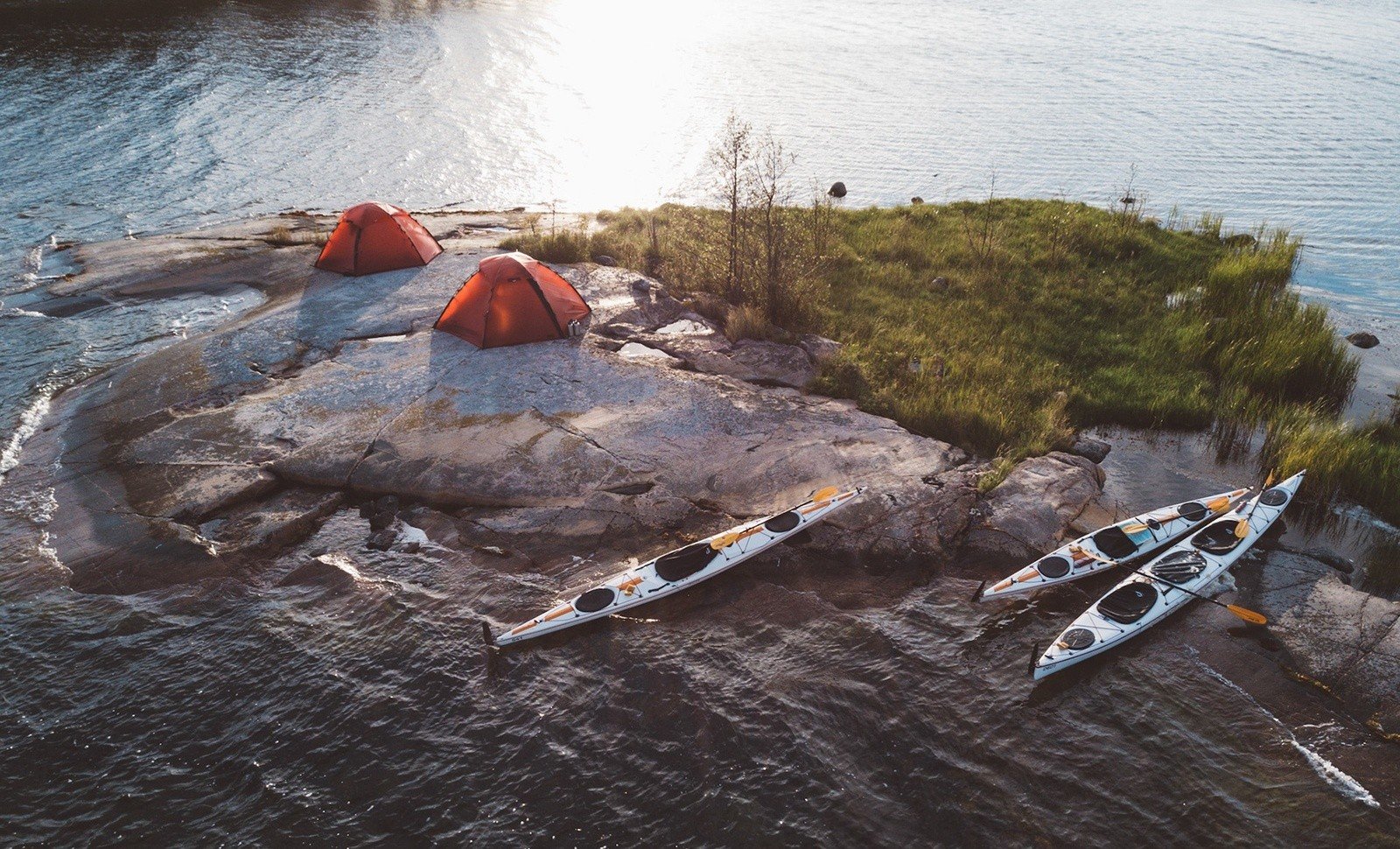
Wherever you choose to go wild camping, it’s important to do it responsibly. Make sure you leave no trace and carry all your litter out with you. This helps maintain a pristine environment for others to enjoy, and shows that wild camping doesn’t have an adverse impact on a place.
The 10 Best Places for Wild Camping in Europe
1. The Sharr Mountains, Kosovo & North Macedonia
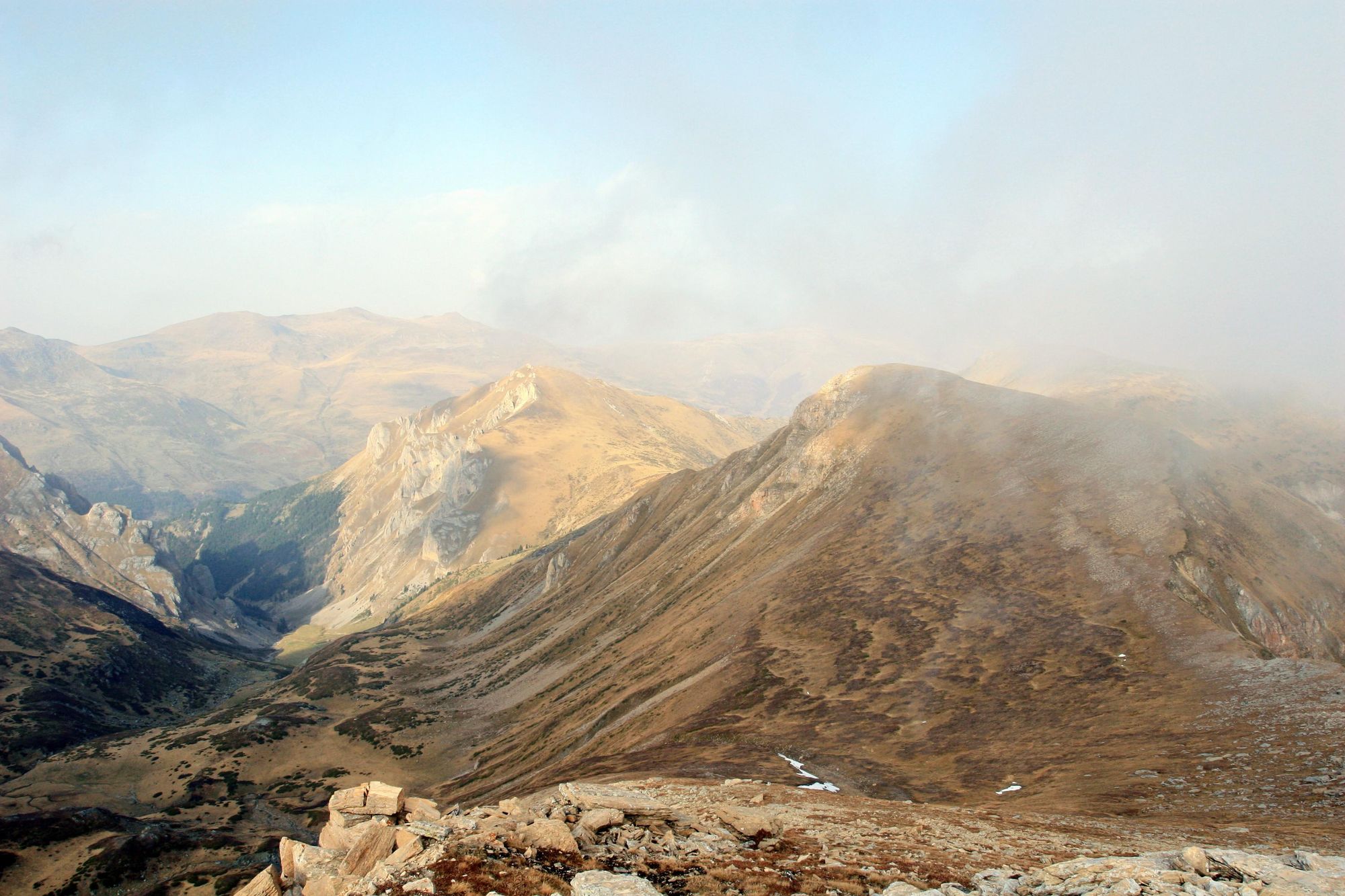
Best for: discovering a little known mountain range.
The Sharr Mountains reach from southern Kosovo to northwestern North Macedonian and even stray into Albania. They are rugged, rocky and imposing - everything we look for in a mountain range - yet they remain little visited.
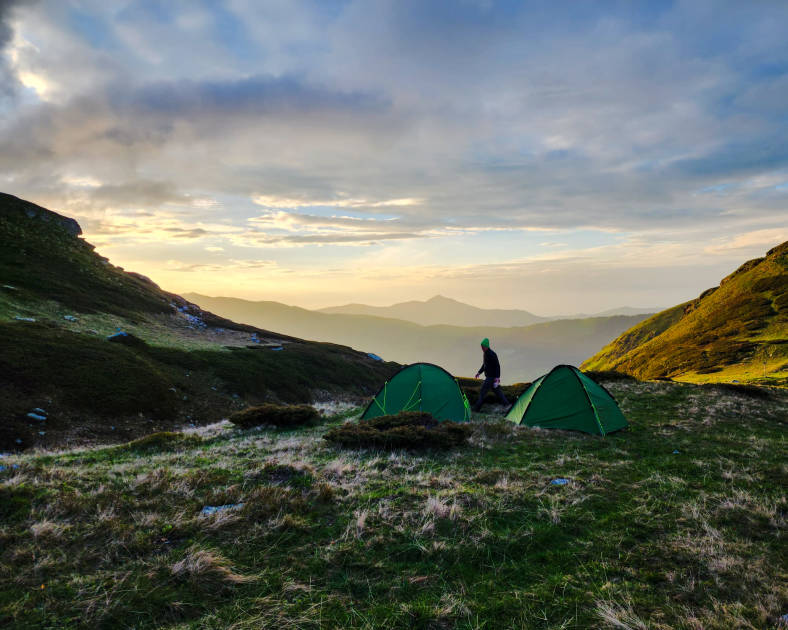
Trek the long-distance High Scardus Trail, known as the 'Soul of the Balkans', and you'll see a whole lot of these mountains, with plenty of opportunities to wild camp. There's a chance you'll see bears, boars, lynx and deer while you're out in the wild. What you'll certainly get the chance to see though, are mountain summits. At 2,748m, Tito is the second-highest summit in North Macedonia – and the highest not shared with a neighbouring country.
Detour from the summer trail on the way down and you can find some beautiful camping spots, and spend the night under the stars of the Balkans.
2. Nærøyfjord, Norway
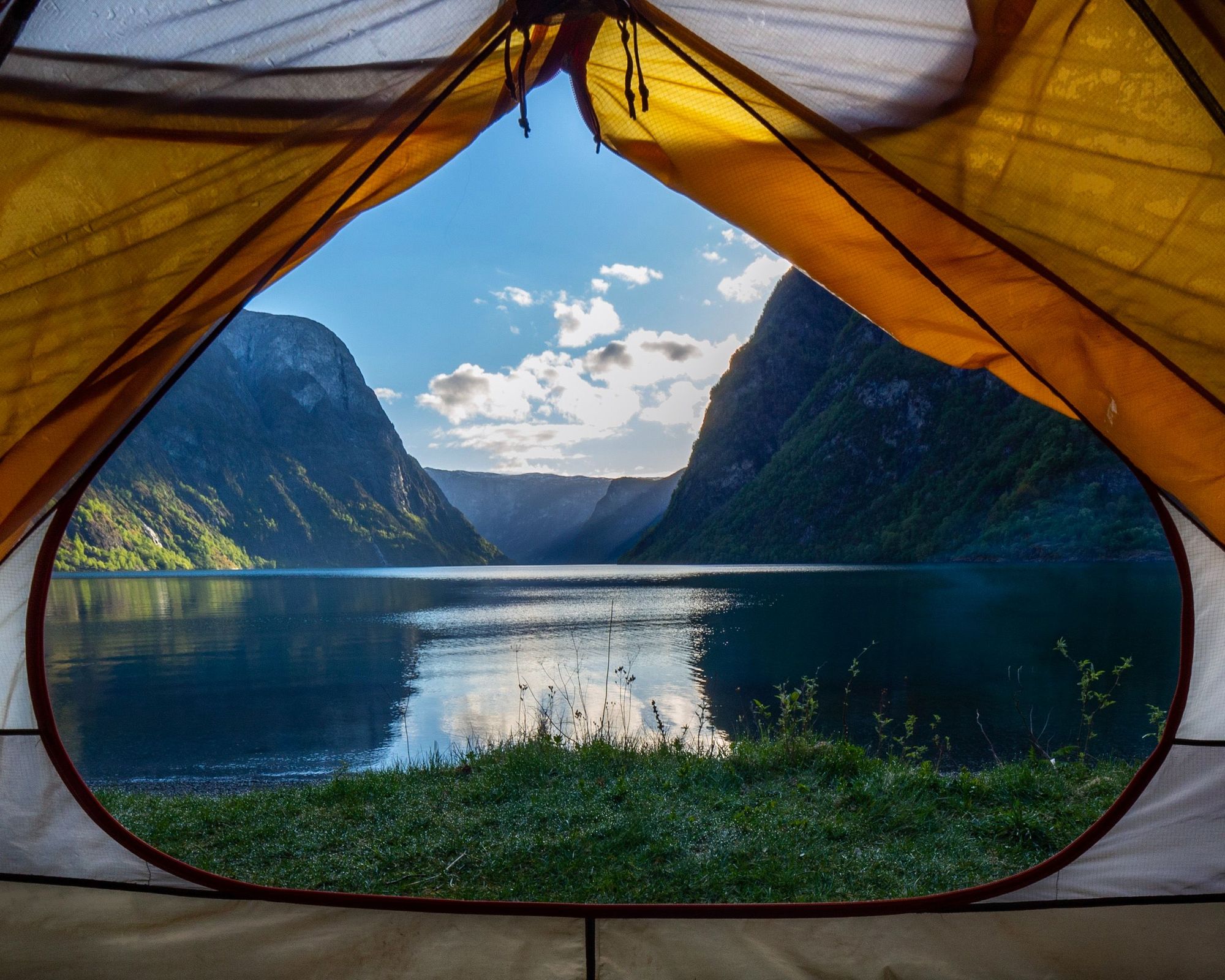
Best for: fjord-side camping.
Norway’s permissive attitude to wild camping, and its pristine natural landscape of fjords, forests and mountains means it tops our list. We recommend heading out on a wild camping adventure to Nærøyfjord, a fjord in western Norway with sheer limestone cliffs rising up on either side. It’s accessible only by water, meaning you’ll be immersed in nature and are unlikely to encounter many other campers - visit it on part of a kayak expedition.

A good place to launch is Gudvangen (literally “God’s Meadow”), a short distance from Bergen. You might see seals in the water as you paddle, and there are several waterfalls cascading down the sheer limestone cliffs. We recommend kayaking for around 7.4 miles (12km) before heading over to camp by the fjord shores. Your guide will choose a campsite near the trailhead for Breiskrednosi, a 1189-metre-high (3900.9 feet) summit which you can hike on the following day. But first, it’s time to set up your tent, brave an icy dip in the fjord and then warm up by the campfire.
Read more: 'The Benchmark for Beauty'| Kayaking the Fjords of Western Norway
3. The backcountry of Iceland
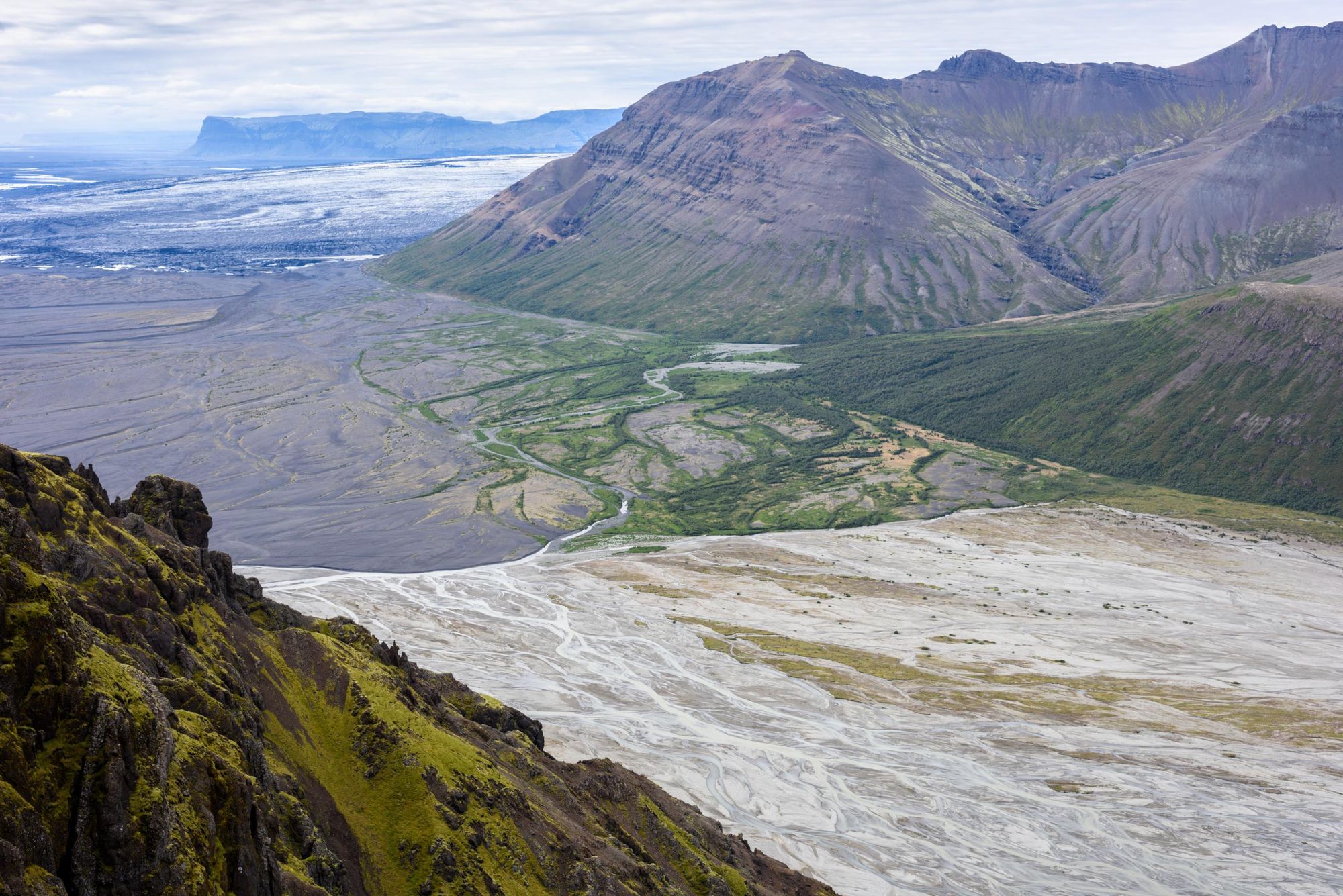
Best for: Discover Iceland off the beaten track.
There are certain spots in Iceland which are now notably overcrowded - the Golden Circle, which is a route tying together Thingvellir National Park, the Geysir geothermal area and Gullfoss waterfall, being the prime example. There is still so much of this wonderful, otherworldly country which is ignored by visitors though, including much of the most beautiful terrain. Trek through canyons, past waterfalls and across lava fields in Vatnajökull National Park and traverse the ice of the vast Skeiðarárjökull glacier and you'll see what we're talking about.
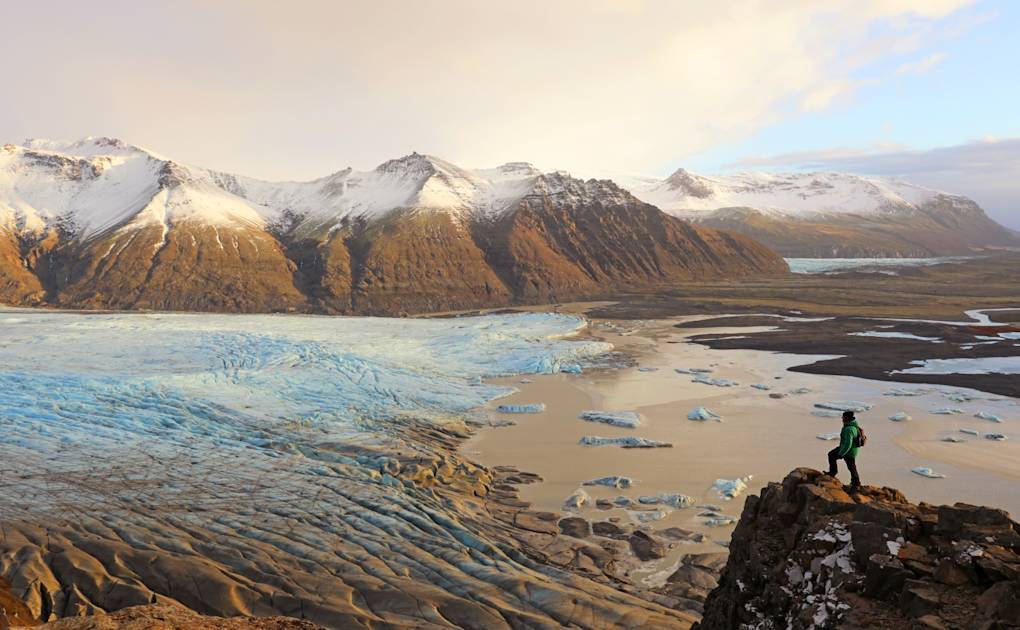
There are strict rules around wild camping in Iceland. Camping in a tent is restricted to uncultivated land for one night, provided there is no campsite in the immediate vicinity and the landowner has not restricted access, but this still leaves a lot of room for responsible adventure. It encourages a multi-day trip where you pitch your tent and then move on; as is proper. This means you can spend one night in a canyon, another beside a glacier, another overlooking floating icebergs and another in dense forest - all on one, magical, unforgettable trip.
4. The Ionian Archipelago, Greece
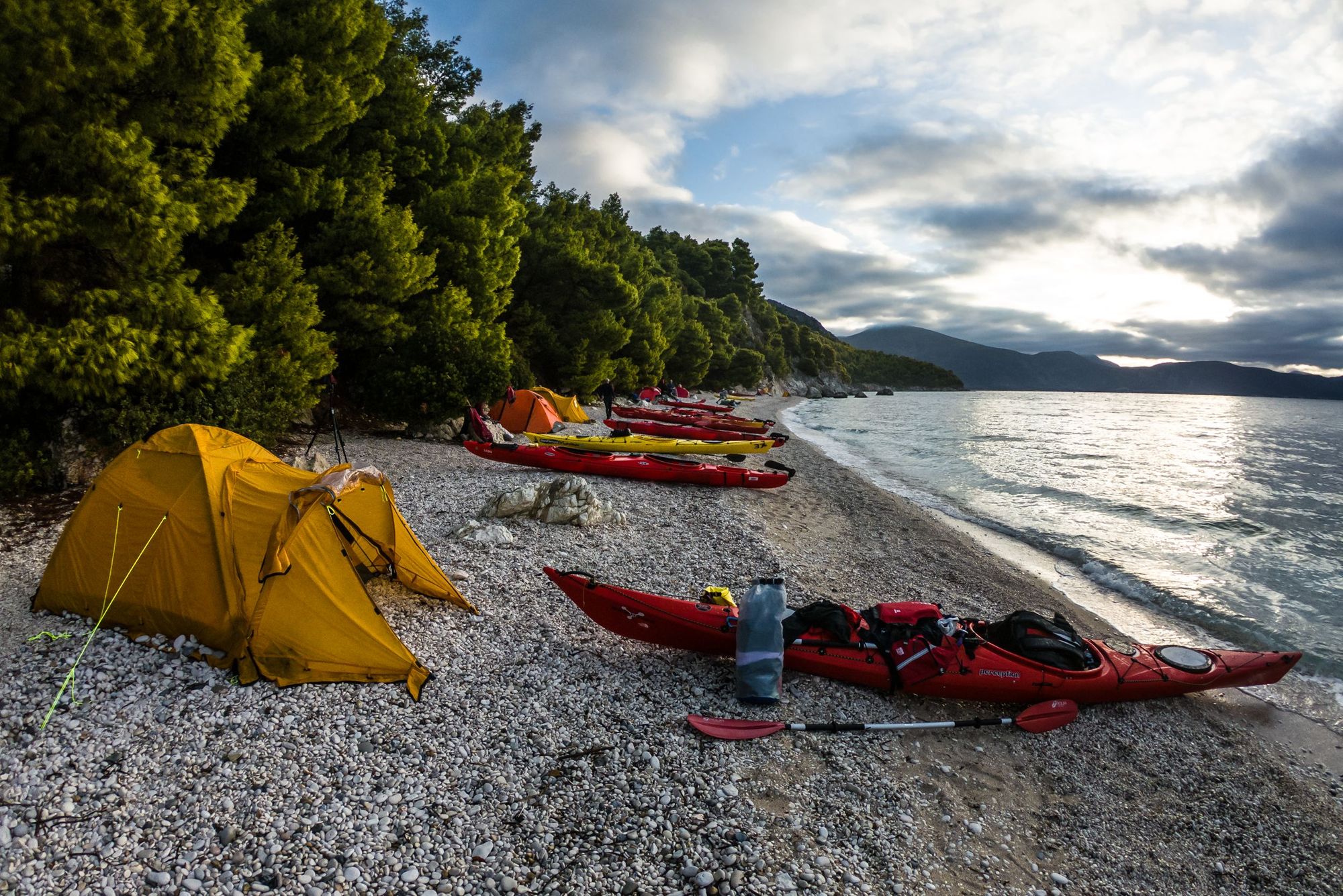
Best for: tucked-away beaches.
You might think of the Greek islands as ‘fly and flop’ destinations that get rammed with tourists, but there are plenty of under-the-radar islands where you can wild camp - some are even uninhabited. We recommend hiring a kayak and paddling around the Ionian Archipelago in search of some decent beaches to set up camp on.
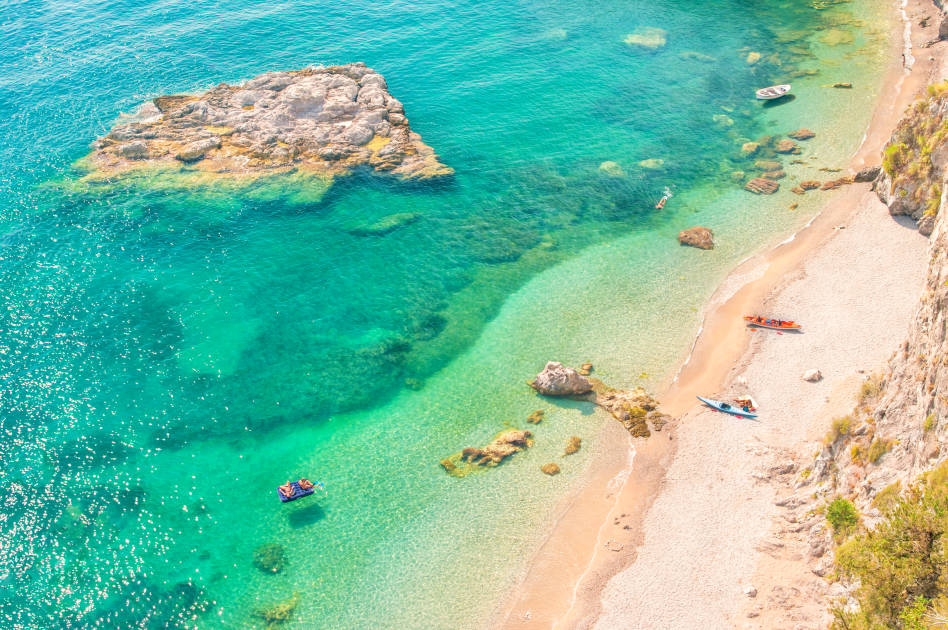
Thilia is a small, uninhabited island with plenty of private, sandy beaches enclosed by forest - take your pick! There are also some good camping spots on the adjacent island of Meganisi, such as Limonari Beach. Remember to pitch your tent above the high tide line, so you don’t wake up with the waves lapping at your feet!
5. The dreamy beaches of Menorca
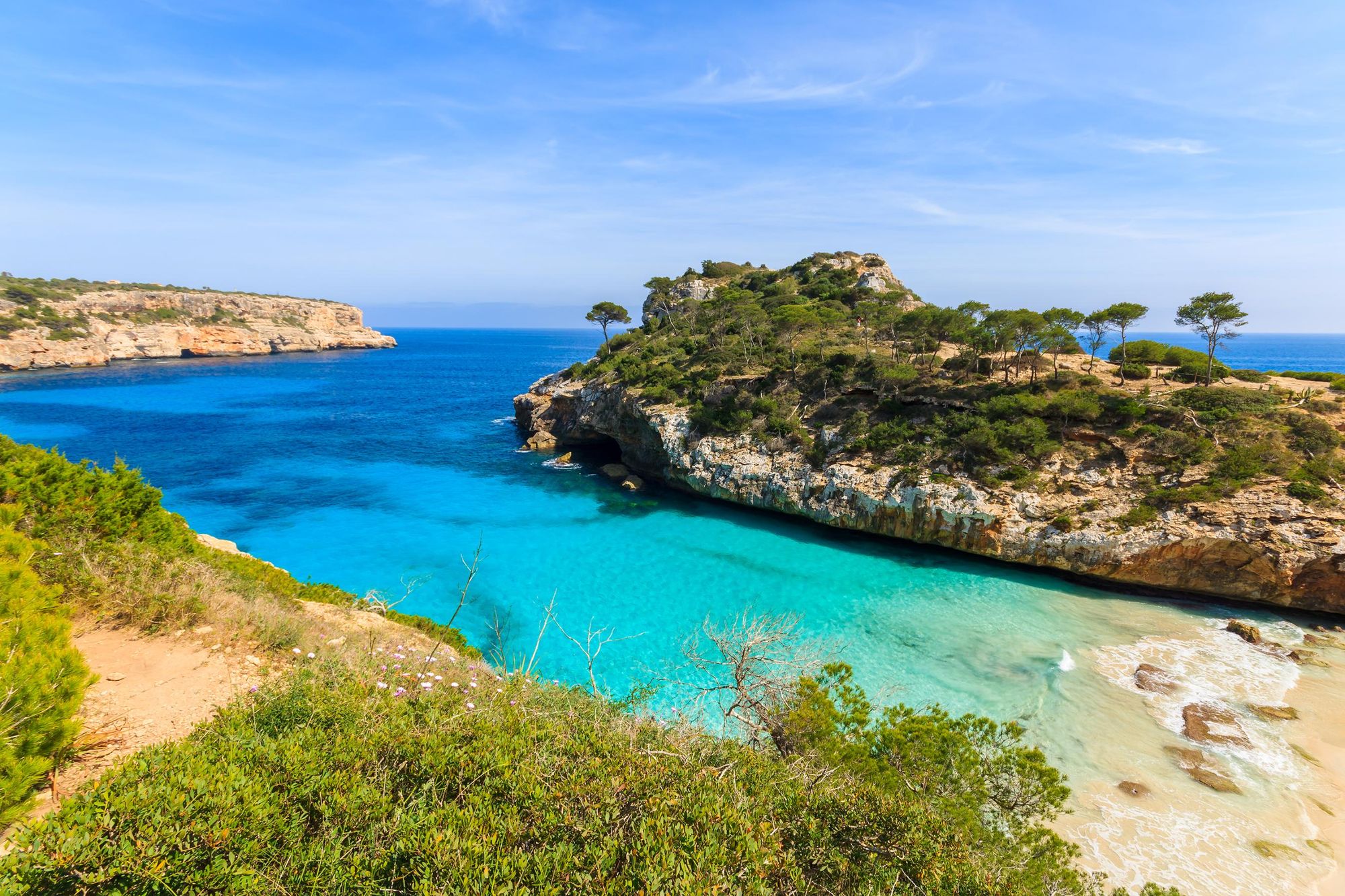
Best for: Combining Mediterranean kayaking and camping.
There's a lot more to Menorca than beach resorts and all-inclusive packages.
Hop in a kayak at Cala Sant Esteve and you'll find yourself in the perfect place to go out on a multi-day paddle and discover the silent, sublime coastline which marks the borders of this wonderful (often stereotyped!) island.
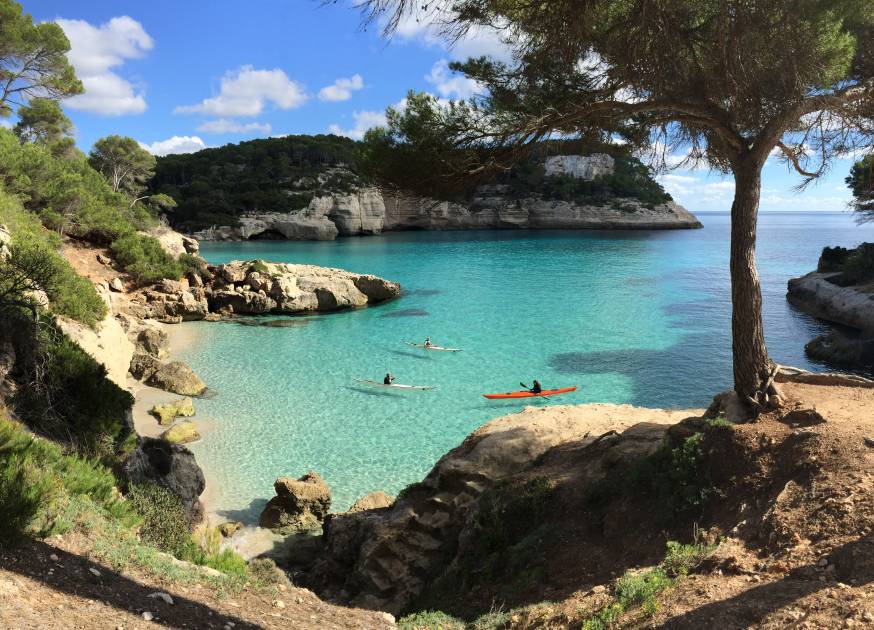
The kayaking alone in this area is worthy of huge acclaim. Picture crystal clear waters which merge to darker blues as you go further out to sea, and huge white, rocky cliffs which dwarf you in the water. At night, set up your bivvy or camp spot on idyllic beaches, with not another soul in sight - and combine wild camping with wild swimming.
6. Tara River Canyon, Montenegro
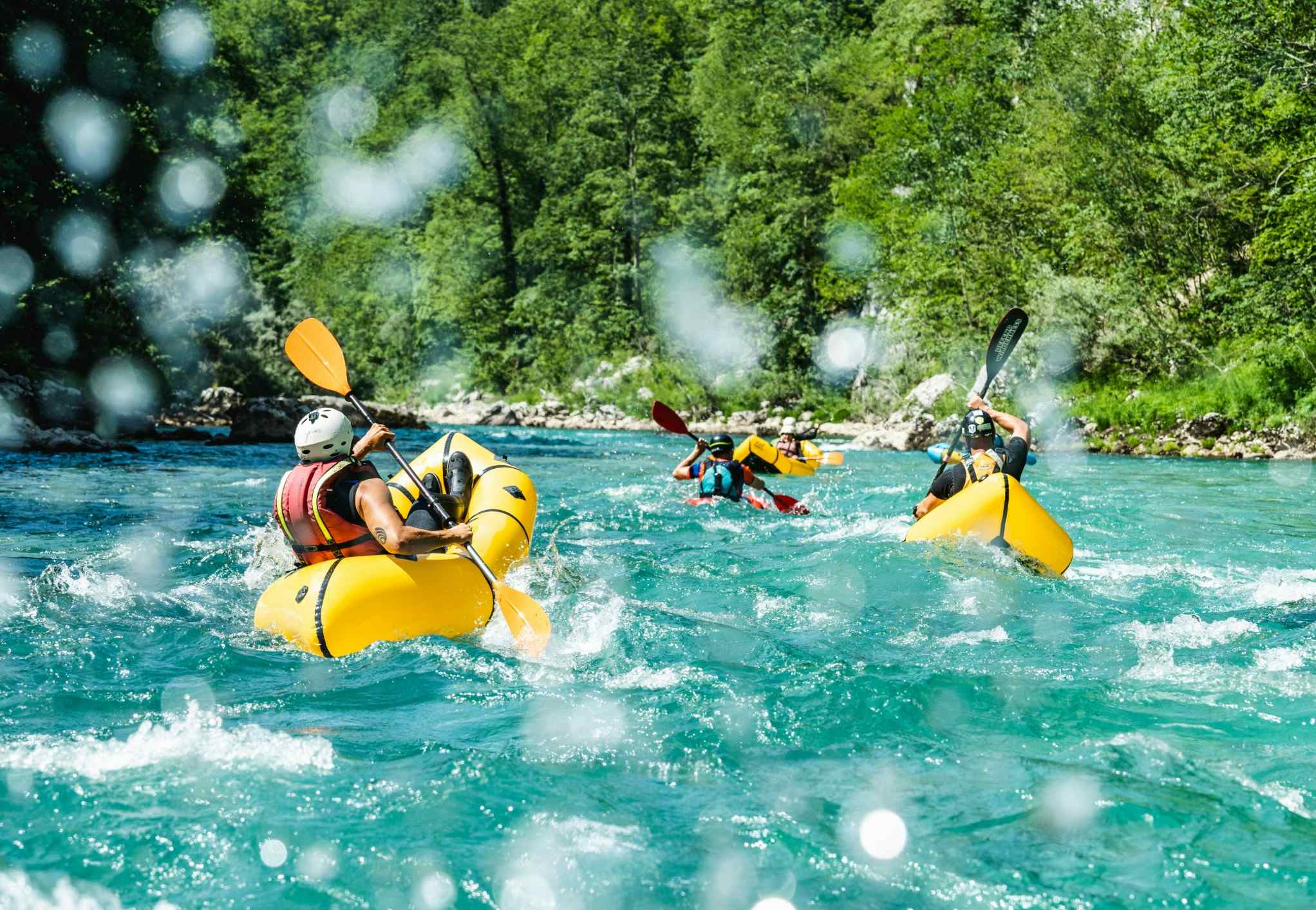
Best for: A packrafting adventure.
The Tara River Canyon in Montenegro is a wonderful world of crystal clear waters, lush forests and mountains which enclose you in and guard you off from the rest of the world. One of the best ways to explore it? By packraft!
Packrafting is when you bring an inflatable kayak with you, which you can then back up tightly after use. You can thus hike with your boat in your bag (rather than having to carry a 15-30kg vessel), and his means that you can access a lot of areas which you wouldn't be able to reach via normal hiking or paddling.
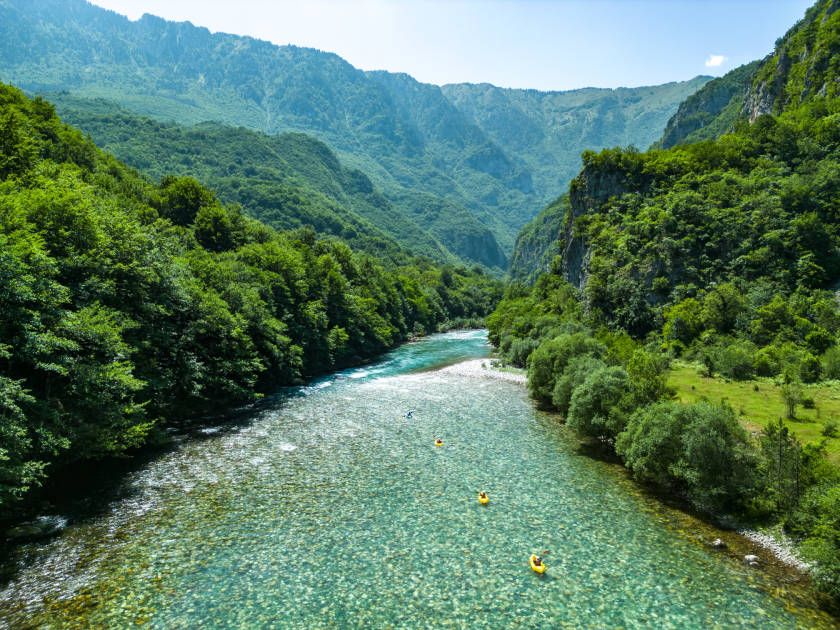
The end result of this is that, along the Tara River Canyon, there are some sublime camping spots, where you can set up after a day of paddling. Pitch your tent just a few metres away from the water and you can fall asleep to the sound of the stream flowing by, then awake with the birdcall in the morning.
7. Ardnish Peninsula, Scotland
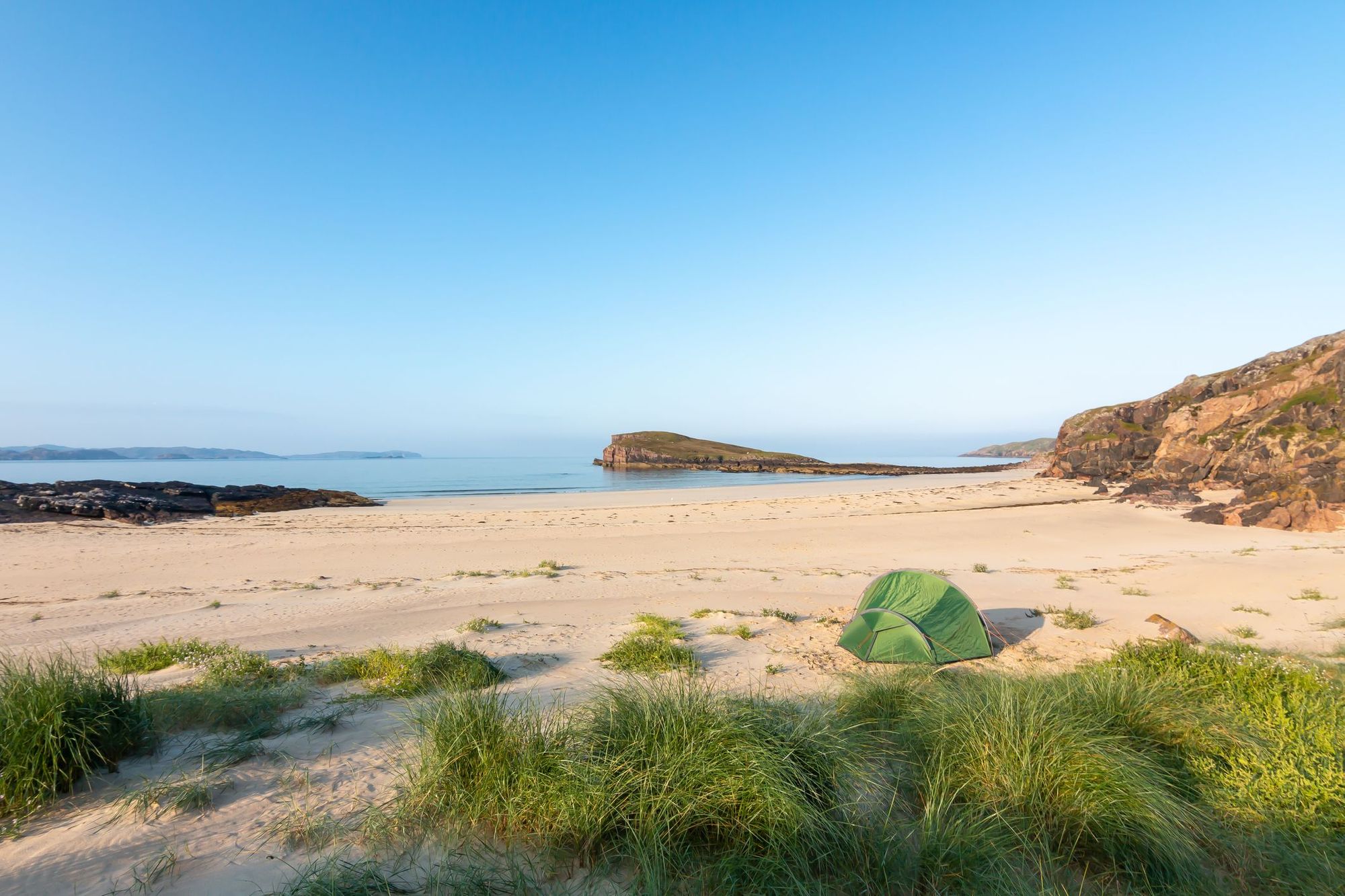
Best for: getting away from the crowds.
Unlike the rest of the UK, wild camping is legal in Scotland under the Land Reform act of 2003 - and so, there are an abundance of beautiful wild camping spots. We're big fans of the beaches and rugged shorelines around the west coast - and in particular, the Ardnish Peninsula. There are no roads here, and the peninsula is uninhabited (though it has a history of human habitation dating back to before the Romans). There are fine views across the water to the isles of Eigg and Rum (which we'll get on to later) - but much of the beauty here comes from the silence.
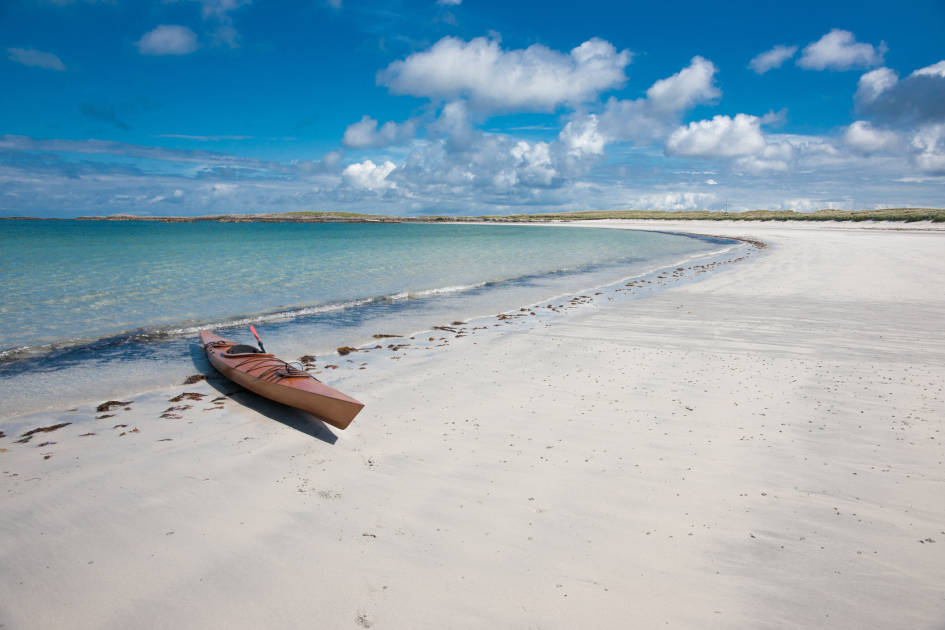
Another option, if you hire a kayak, is to find yourself an islet of your own in the nearby Sound of Arisaig. Expect changeable weather and spectacular views.
8. Spitsbergen, Norway
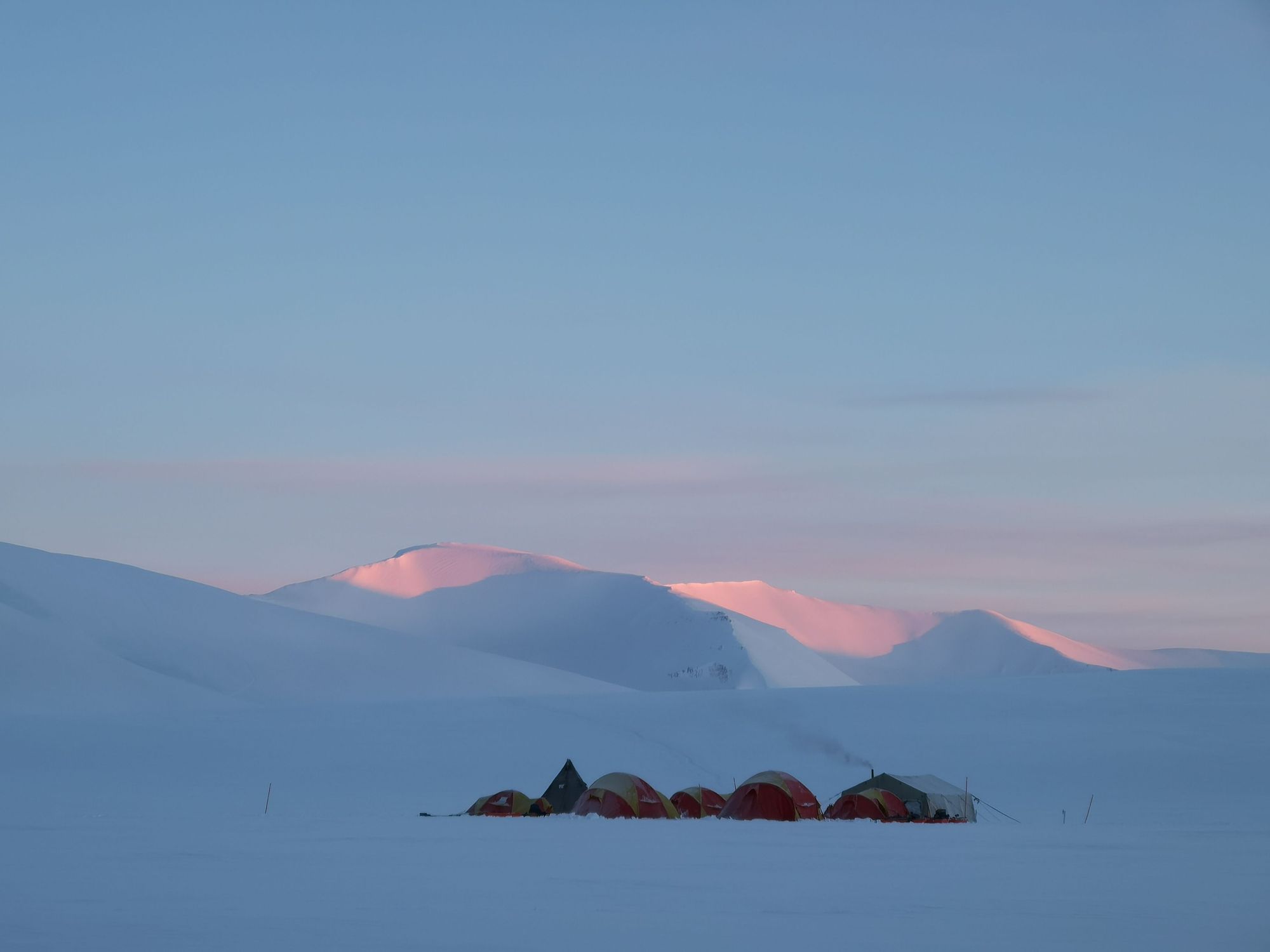
Best for: wild-camping, sub-zero style.
Not all wild camping is about sun-kissed beaches. If you really want to push yourself to your limits, you’ll have to head north. Svalbard is an archipelago in the Arctic Circle where polar bears outnumber people. Its remote shores have rarely been explored, save by the odd trapper or an explorer on the way to the north pole. If you’re going wild camping here, you definitely need to wrap up warm!
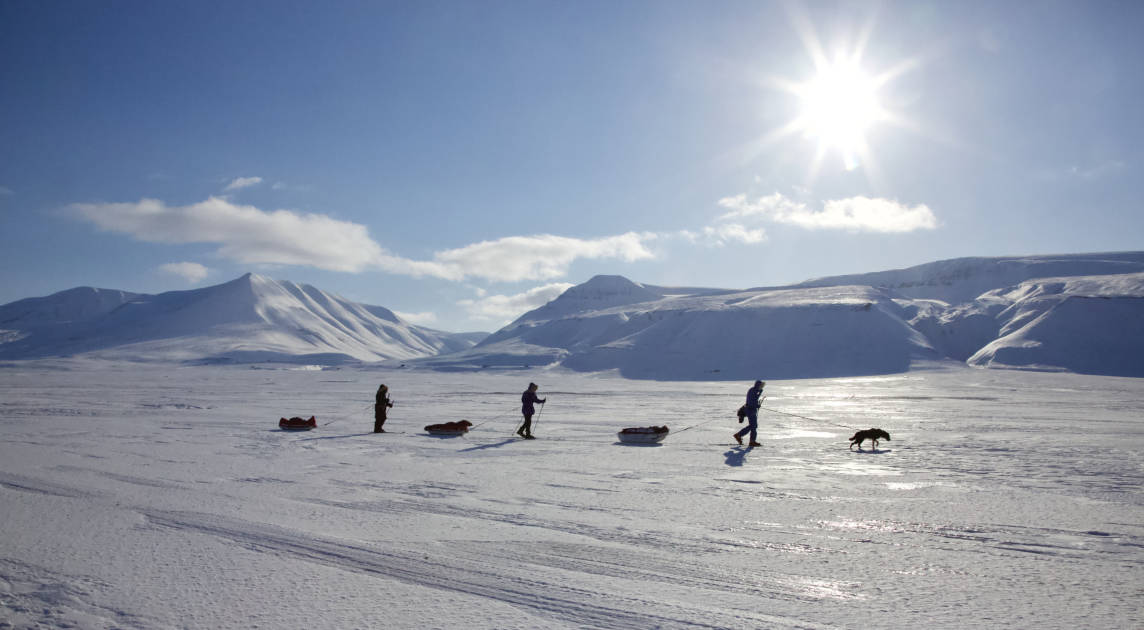
Reach the archipelago by flying to Longyearbyen, a permanently inhabited settlement on the island of Spitsbergen. You can only leave the settlement with a guide armed with a rifle to protect against polar bears - their expert knowledge will be invaluable on this expedition. Leave Longyearbyen on foot dragging your gear in pulkas (small sleds). You’ll set up your campsite in the afternoon, and your guide will advise you on camping in sub zero conditions. You’ll need to take shifts watching for polar bears. A surreal, otherworldly wild camping experience.
Read more: Arctic adventuring in Svalbard: a Photo Story
9. Lofoten Islands, Norway
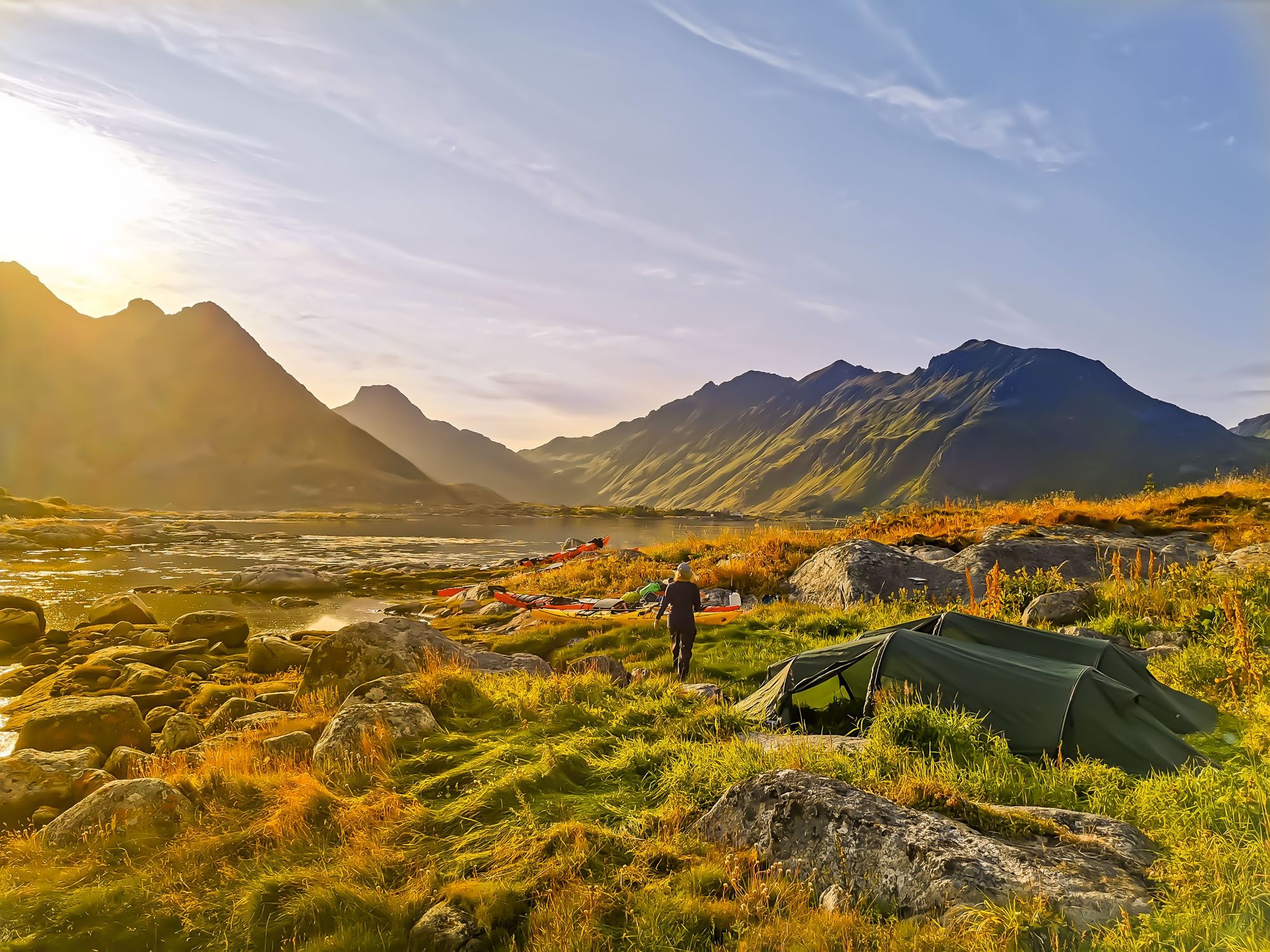
Best for: wild camping under the midnight sun.
The Lofoten Islands have distinctive sharp peaks that rise steeply from the ocean. Traditional red wooden houses nestle into the rocky shorelines of deep fjords. It’s a striking archipelago, made even more special by the eerie light of the Arctic summer that bathes the landscape. Wild camping is permitted on the archipelago, although there are several prohibited areas which your guide will be aware of.

Having a guide is invaluable on an expedition so far north. They’ll be able to choose the best campsites depending on the weather conditions. You might find yourself camping on the shores of a beach, on rugged grassland or even on a tiny, uninhabited island. Visit in June and you’ll experience 24-hour daylight, which gives you plenty of time to set up camp and immerse yourself in nature.
10. Isle of Rùm, Scotland

Best for: moody ocean vistas.
There is a spectacular view of the serrated ridgeline of Rùm on the CalMac ferry over to the island from Mallaig. Rùm is one of Scotland’s Small Isles (the others being Eigg, Canna and Muck) - which sit off the west coast, and it's by far the most mountainous of the four. The main ridgeline is known as the Rùm Cuillin. It's similarly to the Cuillin in nearby Skye in terms of rock type (gabbro) and scrambling terrain - without the huge footfall. The Norse names of the mountains - Askival, Hallival, Ainshval - also add a bit of extra drama to their steep peaks.
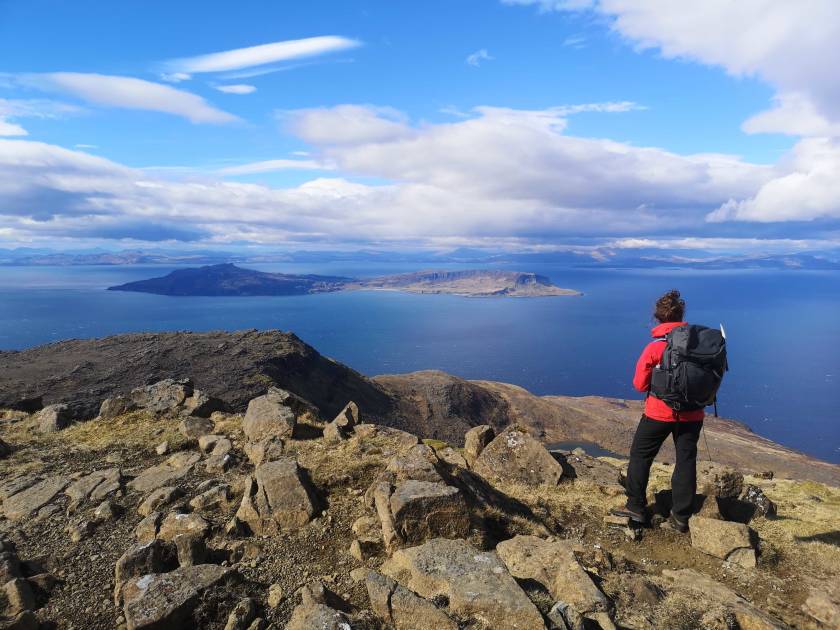
Only around 30 people live on Rùm, in the small town of Kinloch, which is also home to the ferry port. From here, you can set out on a multi-day wild camping expedition - staying near the bothy at Guirdil, beneath the wild ponies of Harris and at the sea stack of Papadil - before making your way round the island to camp at Dibidil. From there, you can return to Kinloch via the Rùm Cuillin.
Read more: Climbing the Rùm Cuillin, on Scotland's Forbidden Isle
Feeling inspired? Check out our adventures in Europe and our collection of wild camping holidays!


